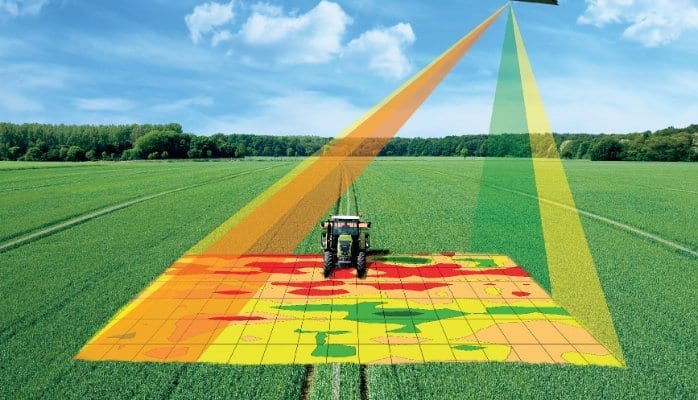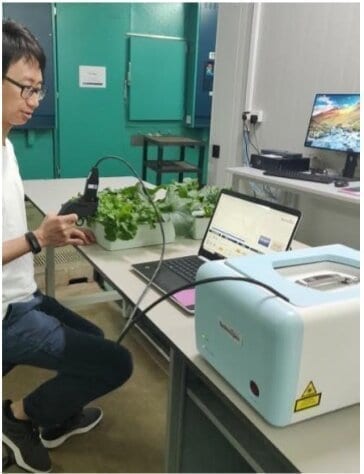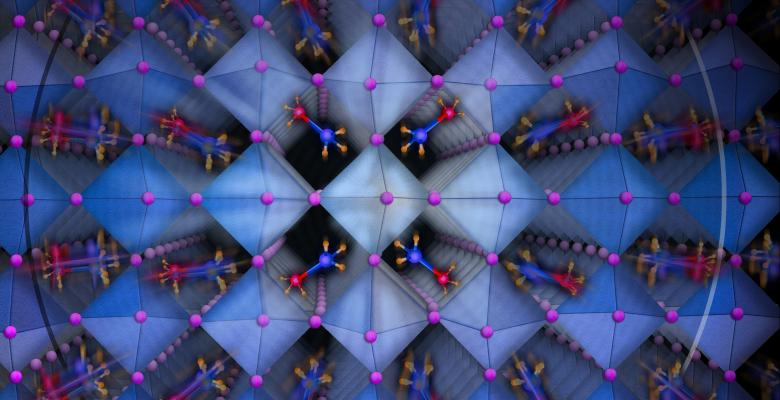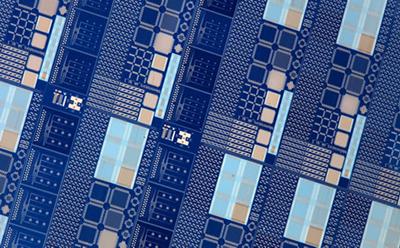
Unused TV spectrum and drones could help make smart farms a reality
ON THE Dancing Crow farm in Washington, sunflowers and squashes soak up the rich autumn sunshine beside a row of solar panels. This bucolic smallholding provides organic vegetables to the farmers’ markets of Seattle. But it is also home to an experiment by Microsoft, a big computing firm, that it hopes will transform agriculture further afield. For the past year, the firm’s engineers have been developing a suite of technologies there to slash the cost of “precision agriculture”, which aims to use sensors and clever algorithms to deliver water, fertilisers and pesticides only to crops that actually need them.
Precision agriculture is one of the technologies that could help to feed a world whose population is forecast to hit almost 10 billion by 2050. If farmers can irrigate only when necessary, and avoid excessive pesticide use, they should be able to save money and boost their output.
But existing systems work out at $1,000 a sensor. That is too pricey for most rich-world farmers, let alone those in poor countries where productivity gains are most needed. The sensors themselves, which probe things like moisture, temperature and acidity in the soil, and which are scattered all over the farm, are fairly cheap, and can be powered with inexpensive solar panels. The cost comes in getting data from sensor to farmer. Few rural farms enjoy perfect mobile-phone coverage, and Wi-Fi networks do not have the range to cover entire fields. So most precision-agriculture systems rely on sensors that connect to custom cellular base stations, which can cost tens of thousands of dollars, or to satellites, which require pricey antennas and data plans.
In contrast, the sensors at Dancing Crow employ unoccupied slices of the UHF and VHF radio frequencies used for TV broadcasts, slotting data between channels. Many countries are experimenting with this so-called “white space”; to unlock extra bandwidth for mobile phones. In cities, tiny slices of the white-space spectrum sell for millions of dollars. But in the sparsely populated countryside, says Ranveer Chandra, a Microsoft researcher, there is unlicensed space galore.
Learn more: Precision agriculture
The Latest on: Precision agriculture
[google_news title=”” keyword=”precision agriculture” num_posts=”10″ blurb_length=”0″ show_thumb=”left”]
via Google News
The Latest on: Precision agriculture
- Industry sells workers on ag jobson April 26, 2024 at 4:25 pm
According to a statistic from the Canada Ag Human Resources Council, there will be 85,000 job vacancies across the entire spectrum of agriculture-related ...
- PTx provides a blend of precision farming systemson April 26, 2024 at 4:12 pm
As of early April there’s a new name on the precision farming landscape: PTx. It includes a joint Agco-Trimble venture that will take over Trimble’s ...
- A Margin Squeeze is Setting in Across Row-Crop Farms, and 80% of Ag Economists Are Now Concerned It'll Accelerate Consolidationon April 26, 2024 at 10:46 am
Farmers across the U.S. push forward to plant, and there’s an immense amount of pressure riding on this year’s crop production picture. With a margin squeeze setting in across farms, economists think ...
- Examining the impact of gene-based breeding on agriculture and medicineon April 25, 2024 at 10:22 am
A research team has demonstrated that gene-based breeding (GBB) offers a transformative approach to advancing plant and animal breeding, showing remarkable predictability, speed, and ...
- Ossoff helping to establish precision ag lab in Tiftonon April 24, 2024 at 9:00 pm
U.S. Sen. Jon Ossoff announced Monday that he's providing resources to help establish a precision agriculture laboratory at the University of Georgia's Institute for Integrative Precision Agriculture ...
- 5 Smart Farming Insights from America’s Largest Ag Publicationon April 24, 2024 at 8:00 am
Farm Journal columnist and former Trimble executive Darryl Matthews agreed that, in his experience, age alone is not a reliable predictor of ag tech adoption success. It is the larger, ...
- Precision Ag Field Day sets technology in motion for studentson April 23, 2024 at 3:30 pm
Precision agriculture uses cutting-edge technology to make farms more efficient. With experts predicting technology will brighten farming’s future, Clemson University academics, Cooperative Extension ...
- Precision Farming Market to Reach USD 22.1 Billion by 2031 Driven by Technological Advancements and Growing Demand for Foodon April 22, 2024 at 7:43 am
Precision Farming Market to Reach USD 221 Billion by 2031 Driven by Technological Advancements and Growing Demand for Food ...
- Protecting against heatwaves – precision agriculture can help India’s farms weather climate changeon April 21, 2024 at 11:33 pm
From heatwaves and unseasonal rainfall, to stressed resources, India’s agriculture sector increasingly finds itself at the mercy of extreme weather events ...
via Bing News










